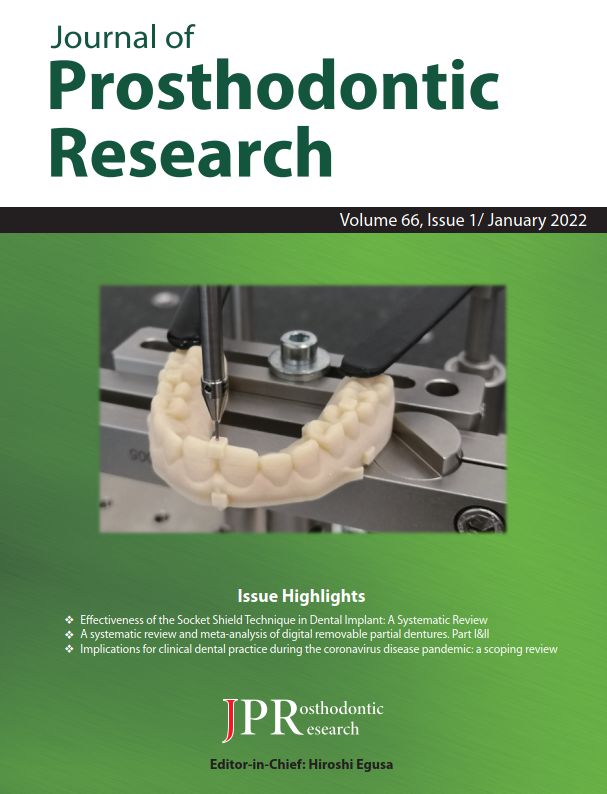66 巻, 1 号
選択された号の論文の25件中1~25を表示しています
- |<
- <
- 1
- >
- >|
Editorial
-
2022 年 66 巻 1 号 p. vi-vii
発行日: 2022年
公開日: 2022/01/11
PDF形式でダウンロード (588K)
Letter to the Editor
-
2022 年 66 巻 1 号 p. 1-3
発行日: 2022年
公開日: 2022/01/11
[早期公開] 公開日: 2021/12/09PDF形式でダウンロード (447K) -
2022 年 66 巻 1 号 p. 4-5
発行日: 2022年
公開日: 2022/01/11
[早期公開] 公開日: 2021/04/09PDF形式でダウンロード (1234K)
Review article
-
2022 年 66 巻 1 号 p. 6-11
発行日: 2022年
公開日: 2022/01/11
[早期公開] 公開日: 2021/10/26PDF形式でダウンロード (745K) -
2022 年 66 巻 1 号 p. 12-18
発行日: 2022年
公開日: 2022/01/11
[早期公開] 公開日: 2021/03/09PDF形式でダウンロード (567K) -
2022 年 66 巻 1 号 p. 19-28
発行日: 2022年
公開日: 2022/01/11
[早期公開] 公開日: 2021/01/14PDF形式でダウンロード (760K) -
2022 年 66 巻 1 号 p. 29-39
発行日: 2022年
公開日: 2022/01/11
[早期公開] 公開日: 2021/01/26PDF形式でダウンロード (4408K) -
2022 年 66 巻 1 号 p. 40-52
発行日: 2022年
公開日: 2022/01/11
[早期公開] 公開日: 2021/01/26PDF形式でダウンロード (1779K) -
2022 年 66 巻 1 号 p. 53-67
発行日: 2022年
公開日: 2022/01/11
[早期公開] 公開日: 2021/01/26PDF形式でダウンロード (2033K)
Original article
-
2022 年 66 巻 1 号 p. 68-74
発行日: 2022年
公開日: 2022/01/11
[早期公開] 公開日: 2021/05/28PDF形式でダウンロード (2844K) -
2022 年 66 巻 1 号 p. 75-82
発行日: 2022年
公開日: 2022/01/11
[早期公開] 公開日: 2021/06/10PDF形式でダウンロード (1551K) -
2022 年 66 巻 1 号 p. 83-86
発行日: 2022年
公開日: 2022/01/11
[早期公開] 公開日: 2021/06/10PDF形式でダウンロード (498K) -
2022 年 66 巻 1 号 p. 87-92
発行日: 2022年
公開日: 2022/01/11
[早期公開] 公開日: 2021/07/15PDF形式でダウンロード (1809K) -
2022 年 66 巻 1 号 p. 93-100
発行日: 2022年
公開日: 2022/01/11
[早期公開] 公開日: 2021/07/01PDF形式でダウンロード (530K) -
2022 年 66 巻 1 号 p. 101-108
発行日: 2022年
公開日: 2022/01/11
[早期公開] 公開日: 2021/04/23PDF形式でダウンロード (4083K) -
2022 年 66 巻 1 号 p. 109-116
発行日: 2022年
公開日: 2022/01/11
[早期公開] 公開日: 2021/06/25PDF形式でダウンロード (1536K) -
2022 年 66 巻 1 号 p. 117-123
発行日: 2022年
公開日: 2022/01/11
[早期公開] 公開日: 2021/06/10PDF形式でダウンロード (1053K) -
2022 年 66 巻 1 号 p. 124-130
発行日: 2022年
公開日: 2022/01/11
[早期公開] 公開日: 2021/06/25PDF形式でダウンロード (7042K) -
2022 年 66 巻 1 号 p. 131-140
発行日: 2022年
公開日: 2022/01/11
[早期公開] 公開日: 2021/07/29PDF形式でダウンロード (3679K) -
2022 年 66 巻 1 号 p. 141-150
発行日: 2022年
公開日: 2022/01/11
[早期公開] 公開日: 2021/06/10PDF形式でダウンロード (2041K) -
2022 年 66 巻 1 号 p. 151-160
発行日: 2022年
公開日: 2022/01/11
[早期公開] 公開日: 2021/07/29PDF形式でダウンロード (3533K) -
2022 年 66 巻 1 号 p. 161-166
発行日: 2022年
公開日: 2022/01/11
[早期公開] 公開日: 2021/07/21PDF形式でダウンロード (1055K) -
2022 年 66 巻 1 号 p. 167-175
発行日: 2022年
公開日: 2022/01/11
[早期公開] 公開日: 2021/06/25PDF形式でダウンロード (3984K) -
2022 年 66 巻 1 号 p. 176-183
発行日: 2022年
公開日: 2022/01/11
[早期公開] 公開日: 2021/07/29PDF形式でダウンロード (3365K)
Case report
-
2021 年 66 巻 1 号 p. 184-192
発行日: 2021年
公開日: 2022/01/11
[早期公開] 公開日: 2021/05/28PDF形式でダウンロード (8289K)
- |<
- <
- 1
- >
- >|
